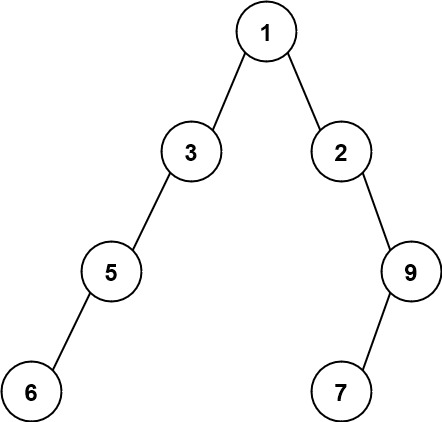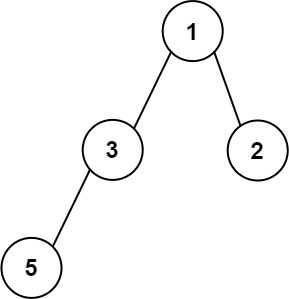给你一棵二叉树的根节点 root ,返回树的 最大宽度 。
树的 最大宽度 是所有层中最大的 宽度 。
每一层的 宽度 被定义为该层最左和最右的非空节点(即,两个端点)之间的长度。将这个二叉树视作与满二叉树结构相同,两端点间会出现一些延伸到这一层的 null 节点,这些 null 节点也计入长度。
题目数据保证答案将会在 32 位 带符号整数范围内。
示例 1:

输入:root = [1,3,2,5,3,null,9]
输出:4
解释:最大宽度出现在树的第 3 层,宽度为 4 (5,3,null,9) 。
|
示例 2:

输入:root = [1,3,2,5,null,null,9,6,null,7]
输出:7
解释:最大宽度出现在树的第 4 层,宽度为 7 (6,null,null,null,null,null,7) 。
|
示例 3:

输入:root = [1,3,2,5]
输出:2
解释:最大宽度出现在树的第 2 层,宽度为 2 (3,2) 。
|
提示:
- 树中节点的数目范围是
[1, 3000]
-100 <= Node.val <= 100
C++
class Solution {
public:
int res = 0;
int widthOfBinaryTree(TreeNode* root) {
vector<int> left;
dfs(root, 1, 1, left);
return res;
}
void dfs(TreeNode* root, int lvl, unsigned int index, vector<int>& left){
if(!root) return;
if(lvl > left.size()) left.push_back(index);
res = res > index - left[lvl - 1] + 1 ? res : index - left[lvl - 1] + 1 ;
dfs(root -> left, lvl + 1, index * 2, left);
dfs(root -> right, lvl + 1, index * 2 + 1, left);
}
};
|


